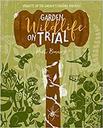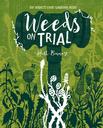
Plant potatoes on Good Friday
The efficacy of this advice depends on where you live and the timing of Easter. In the south of England a crop is believed to be doomed if planted on that day. In the north, and in the Midlands, where Good Friday is known as ‘Spud Day’, the reverse is true.Because Easter is a movable feast – it falls on the first Sunday after the first full moon after the vernal equinox (March 21st) – planting potatoes on Good Friday will not necessarily guarantee either good weather or warm soil. Advice concerning the moon and potato planting is contradictory, at best, but the majority opinion favours planting when the moon is on the wane (which chimes with Good Friday) but also in darkness before the moon rises or after it sets.
The Irish potato famine of the 1840s was caused by blight, a fungal disease. In the 21st century, what growers dread most is ring rot, caused by the highly contagious bacterium with the enormously long scientific name of Clavibacter michiganensis sepedonicus. It devastates seed potatoes by turning the inside of the tubers into an oozing mass.
For a very early crop, ready to eat by Christmas, buy specially prepared potatoes and plant them in July, using fleece to keep off the frosts. These can also be grown in large pots or specially made ‘gro-sacs’ and brought into a cool greenhouse in autumn.
Some country folk still believe that if you carry a potato in your pocket it will draw out from the body the substances that cause rheumatism.
In World War II the new potato was ‘illegal’. To get the maximum yield from the crop, commercial growers were forbidden from lifting their crop before July 21st, and amateurs were asked to do the same.
Taken from the book The Gardener's Wise Words and Country Ways.








